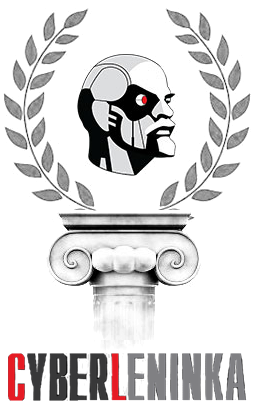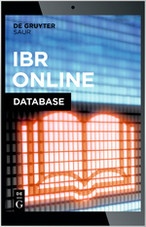- 07 June 2018
Article/Publication Details
Views: 3697
RETHINKING SPATIOTEMPORAL EXTENSION: HUSSERL’S CONTRIBUTION TO THE DEBATE ON THE CONTINUUM HYPOTHESIS
| Title in the language of publication: | RETHINKING SPATIOTEMPORAL EXTENSION: HUSSERL’S CONTRIBUTION TO THE DEBATE ON THE CONTINUUM HYPOTHESIS |
| Author: | Claudio Tarditi |
| Issue: |
HORIZON. Studies in Phenomenology. Vol. 7, №1 (2018), 137-159 |
| Language: | English |
| Document type: | Research Article |
| DOI : 10.21638/2226-5260-2018-7-1-137-159 | PDF (Downloads: 2858) |
Abstract
In this text, I intend to demonstrate the relevance of Husserl’s phenomenology for the debate on Cantor’s continuum hypothesis. Once described the classical formulation of this problem by Cantor, Dedekind, Zermelo-Fraenkel, and Hilbert, I observe that the current discussion about this issue is characterized by the opposition between a Platonist (Gödel) and a formalist (Cohen) solution. Although this latter is widespread among mathematicians, a few of them still think that the continuum conjecture is relevant for a philosophical foundation of set theory and, in general, for a scientific description of reality. Most of them have been somehow inspired by Husserl's phenomenology. This is the case, for instance, for Weyl and Gödel himself, even if both of them gradually abandoned phenomenology for, respectively, constructivism/predicativism and Platonism. My aim in this text is to reconstruct this “minor” history, in order to show how Husserl’s account of the continuum, developed in different ways by Weyl and Gödel, remains the unique radical attempt to found mathematical formalization on intuition. Although the continuum, namely the phenomenological condition of both the flux of the lived-experiences and the flowing of the intuitive data, is a real leitmotiv of the phenomenological method as a whole, it plays a peculiar role in the early Husserl, notably in his lectures of 1891 on Philosophy of Arithmetic, those of 1905-1908 On the Phenomenology of the Consciousness of Internal Time, and those of 1907 on Things and Space. In these texts, there emerges a theory of how the concept of the continuum originates in the intuition of concrete data: more precisely, the intuition of continuity is conceived as the phenomenological condition for any mathematical formalization of the continuum. This does not entail that Husserl is not committed to the problem of a rigorous formalization of the continuum. Rather, as demonstrated by his in-depth inspection of spatial perception and time-consciousness, he is fully aware of the limits of any attempt of formalizing continuity (the same limits Weyl will emphasize concerning Cantor-Dedekind’s axiom). Accordingly, it is precisely for its attempt to keep together intuition and formalization that transcendental phenomenology still plays a relevant role in the current debate about the foundation of mathematics.
Key words
Continuum, set theory, platonism, formalism, intuition, time-consciousness.
References
- Boi, L. (2004). Questions Regarding Husserlian Geometry and Phenomenology. A Study of the Concept of Manifold and Spatial Perception. Husserl Studies, 20 (3), 207-267.
- Cantor, G. (1878). Ein Beitrag zur Mannigfaltigkeitslehre. Journal für die reine und angewandte Mathematik, 84, 242-258.
- Cantor, G. (1932). Gesammelte Abhandlungen mathematischen und philosophischen Inhalt. Springer, Berlin.
- Centrone, S. (2010). Logic and Philosophy of Mathematics in the Early Husserl. Dordrecht: Springer.
- Claesges, L. (1964). Edmund Husserls Theorie der Raumkonstitution. The Hague: Nijhoff.
- Cohen, P. J. (1963a). The Independence of the Continuum Hypothesis. Proceedings of the National Academy of Sciences USA, I (50), 1143-1148.
- Cohen, P. J. (1963b). The Independence of the Continuum Hypothesis. Proceedings of the National Academy of Sciences USA, II (51), 105-110.
- Da Silva, J. J. (1997). Husserl’s Phenomenology and Weyl’s Predicativism. Synthèse, 110, 277-296.
- De Warren, N. (2009). Husserl and the Promise of Time. Cambridge: Cambridge University Press.
- Feist, R. (Ed.). (2004). Husserl and the Sciences. Selected Perspectives. Ottawa: Ottawa University Press.
- Føllesdal, D. (1999). Gödel and Husserl. In J. Petitot & F. Varela (Eds.), Naturalizing Phenomenology (385-400). Stanford: Stanford University Press.
- Gödel, K. (1938). The Consistency of the Axiom of Choice and of the Generalized Continuum Hypothesis. Proceedings of the National Academy of Sciences USA, 24, 556-557.
- Gödel, K. (1944). Russell’s Mathematical Logic. In S. Feferman, J. Dawson & S. Kleene (Eds.), Journal of Symbolic Logic (119-141). Evanston: Northwestern University Press.
- Gödel, K. (1947). What is Cantor’s Continuum Problem? American Mathematical Monthly, 54, 515-525.
- Gödel, K. (1990). Collected Works II: Publications 1938-1974. Oxford: Oxford University Press.
- Gödel, K. (1995). Collected Works III: Unpublished Essays and Lectures. Oxford: Oxford University Press.
- Hilbert, D. (1900). Über den Zahlbegriff. Jahresbericht der Deutschen Mathematiker-Vereinigung, 8, 180-183.
- Hilbert, D. (1935). Gesammelte Abhandlungen, Band 3. Berlin: Springer.
- Hopkins, B. (2011). The Origin of the Logic of Symbolic Mathematics. Edmund Husserl and Jacob Klein. Bloomington: Indiana University Press.
- Husserl, E. (1966). Analysen zur Passiven Synthesis (Hua XI). Den Haag: Nijoff.
- Husserl, E. (1970). The Crisis of European Sciences and Transcendental Phenomenology. Evanston: Northwestern University Press.
- Husserl, E. (1976). Ideen zu einer reinen Phänomenologie und phänomenologischen Philosophie. Erstes Buch (Hua III/1). Den Haag: Nijhoff.
- Husserl, E. (1991). On the Phenomenology of the Consciousness of Internal Time (1893-1917). Dordrecht: Kluwer Academic.
- Husserl, E. (1997). Thing and Space. Lectures of 1907. Dordrecht: Springer.
- Husserl, E. (2001a). Die Bernauer Manuskripte über das Zeitbewusstsein (1917/18). Dordrecht: Kluwer.
- Husserl, E. (2001b). Logical Investigations (I-II). New York: Routledge.
- Husserl, E. (2001c). Logical Investigations (III-VI). New York: Routledge.
- Husserl, E. (2003). Philosophy of Arithmetic. Dordrecht: Springer.
- Linnebo, Ø. (2017). Philosophy of Mathematics. Princeton: Princeton University Press.
- Longo, G. (1999). The Mathematical Continuum. From Intuition to Logic. In J. Petitot & F. Varela (Eds.), Naturalizing Phenomenology (401-428). Stanford: Stanford University Press.
- Rykman, T. (2005). The Reign of Relativity. Oxford: Oxford University Press.
- Schlipp, P.A. (Ed.). (1963). The Philosophy of Rudolf Carnap. Chicago: Open Court.
- Schnell, A. (2002). Das Problem der Zeit bei Husserl. Eine Untersuchung über die husserlschen Zeitdiagramme. Husserl Studies, 18 (2), 89-122.
- Sokolowski, R. (1964). The Formation of Husserl’s Concept of Constitution. Den Haag: Nijhoff.
- Tieszen, R. (2005). Phenomenology, Logic and the Philosophy of Mathematics. Cambridge: Cambridge University Press.
- Van Dalen, D. (1984). Four Letters from Edmund Husserl to Hermann Weyl. Husserl Studies, 1, 1-12.
- Weyl, H. (1987). The Continuum: A Critical Examination of the Foundations of Analysis. New York: Dover.
- Weyl, H. (2009). Mind and Nature, Princeton: Princeton University Press.
- Wittgenstein, L. (1964). Philosophical Remarks. Oxford: Basil Blackwell.
- Zermelo, E. (1904). Beweis dass jede Menge wohlgeordnet werden kann. Mathematische Annalen, 59, 514-516.

This work is licensed under a Creative Commons Attribution-NonCommercial 4.0 International License.

|
|
|
|
|

|
|
|
|
|

|
|
|
|
|
|
|
|
|
|
|
|
|
|
|
|
|
|
|
|
|
|

|
|
|
|
|
|
|
|
|
|
|
|
|
|
|
|
|
|
|
|
|
|
|
|
|
|
|
|

|

|
Social networks:





